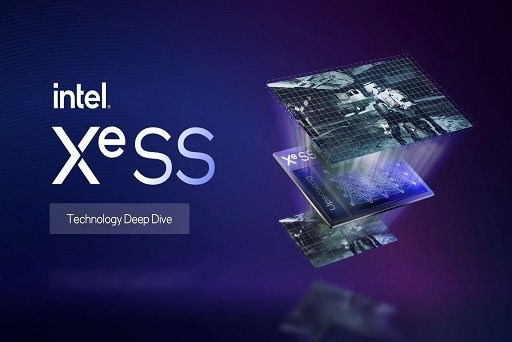Intel XeSS is an exciting advancement in the world of PC game upscaling. This technology is finally available, and we have thoroughly tested it to provide you with a comprehensive overview of how it can improve your gaming experience.
While Intel XeSS is similar to AMD and Nvidia technology, it has its own set of advantages and disadvantages. We have compiled everything you need to know about Intel XeSS, including how it works, which games it supports, and how it compares to AMD and Nvidia rivals.

Intel XeSS
Intel XeSS, or Xe Super Sampling, is a feature of Intel Arc Alchemist graphics cards that allows for upscaling. It works by first rendering your game at a lower resolution and then upscaling it with machine learning and dedicated AI hardware found within the GPU. This allows it to improve performance while maintaining the highest possible image quality.
XeSS functions similarly to Nvidia’s Deep Learning Super Sampling (DLSS). The main distinction is that Intel XeSS supports graphics cards from multiple vendors, whereas DLSS only supports Nvidia graphics cards.
Intel accomplished this by providing two versions of XeSS: one for Arc GPUs such as the Arc A770 and A750, and another for graphics cards made by other vendors. Because of its advanced upscaling model and the Xe Matrix Extension (XMX) AI cores found inside Intel Arc, the version for Intel Arc is likely to perform better.
The XeSS that AMD and Nvidia card owners can try is a little simpler, with a less robust upscaling model and DP4a instructions, making it inferior to Intel’s own XMX cores.
Having said that, while the model used for non-Intel GPUs was simpler, we discovered that Intel XeSS provided a comparable performance boost across the board. We’ll go over it in greater detail in the Performance section below.
Players will be able to choose between four quality modes in supported games. Higher-quality modes provide better image quality at the expense of performance, whereas low-quality modes improve performance but may not look as good:
| Mode | Resolution scaling factor |
| Performance | 2x |
| Balanced | 1.7x |
| Quality | 1.5x |
| Ultra quality | 1.3x |
XeSS appears to be able to scale the input resolution even further than AMD’s FidelityFX Super Resolution, in addition to providing more options (FSR). Players should have more options with four quality modes, as DLSS and FSR only offer three, with some titles supporting an optional fourth.
You may also like DDR6 RAM is four times as fast as DDR4
How does Intel XeSS work?
XeSS is not overly complicated to grasp. Instead of running a game at its native resolution (say, 4K), it takes input from the game at a lower resolution (like 1080p).
These inputs are processed by the XeSS upscaling engine, which includes an AI model to improve upscaling. The end result should be an image that looks similar to the native resolution but with much higher performance.
XeSS uses depth, motion, color, and lighting inputs from the game. The final results of these inputs are saved in an internal history after upscaling. That history feeds data to the next incoming frame, and so on.
While that is happening, XeSS takes the current frame and applies temporal anti-aliasing (TAA) to smooth out jagged edges. Because it can upscale and perform anti-aliasing in the same step, XeSS replaces traditional anti-aliasing.
Machine learning is the secret sauce. Intel Arc Alchemist graphics cards contain XMX cores that run the AI model to perform upscaling. They’re similar to Nvidia’s Tensor cores found on RTX 30-series graphics cards, and Intel claims they provide the best quality when combined with XeSS.
XeSS, on the other hand, can function without the XMX cores. Graphics cards that support DP4a instructions, which are useful for AI calculations, are also supported.
We have a full list of supported GPUs below, but the latest RX 6000 graphics cards from AMD, as well as the last several generations from Nvidia, support these instructions. Nvidia’s RTX 40-series and AMD’s RDNA 3 are likely to support XeSS as well.
You may also like Best DDR5 RAM for gaming
Intel XeSS games
Intel has only announced a few key titles that will support XeSS, but the company says it is working on several more partnerships. Here are the games that have been announced to support Intel XeSS when it is released:
- Anvil Vault Breakers
- Arcadegeddon
- CHORUS
- Call of Duty: Modern Warfare II
- Chivalry II
- Death Stranding: Director’s Cut
- DioField Chronicle
- Dolmen
- Ghostbusters Spirits Unleashed
- Ghostwire Tokyo
- Gotham Knights
- Hitman III
- Naraka: Bladepoint
- Redout 2
- Shadow of The Tomb Raider
- Super People
- The Riftbreaker
- The Settlers
- Vampire the Masquerade: Bloodhunt
Although Intel has only announced a few titles that will support XeSS, we should see more in the future. To bring XeSS to more titles, Intel says it is collaborating with studios such as Techland (Dying Light 2), 505 Games (Control, Ghostrunner), and Ubisoft.
Support will be critical to the success of the scaling technology. Many games already have an upscaling feature thanks to Nvidia DLSS and AMD FSR, so XeSS is entering a crowded market.
You may also like How to check RAM on Windows 11
Intel XeSS compatibility
Intel XeSS competes with Nvidia DLSS and AMD FSR, but it appears to combine the best of both technologies under a single roof. This is due to the fact that XeSS supports both Intel and third-party graphics cards, including some that are several generations old.
The dedicated XMX cores will be found only in Intel’s Arc Alchemist graphics cards, which Intel claims provide the best quality and performance. However, GPUs that support the DP4a instruction can run XeSS as well, with a minor trade-off in image quality and/or performance. The following GPUs support DP4a for Intel XeSS:
- Intel Arc Alchemist (Xe-HPG)
- Intel Xe-LP integrated graphics (11th-generation mobile)
- Nvidia RTX 40-series (Ada Lovelace)
- Nvidia RTX 30-series (Ampere)
- Nvidia RTX 20-series (Turing)
- Nvidia GTX 10-series (Pascal)
- AMD RX 7000 (RDNA 3)
- AMD RX 6000 (RDNA 2)
Although XeSS does not have the same level of compatibility as FSR, it covers a lot more ground than Nvidia DLSS — and it appears to work in the same way.
Intel provides XeSS as a free open-source package for developers. Furthermore, XeSS will be available as a plugin in Unreal Engine, making it simple for developers to incorporate into their games. We don’t know if XeSS will be available on consoles like AMD FSR.
You may also like Best Cheap Gaming PC
Intel XeSS performance
During our testing of the Arc A770 and Arc A750, we had the opportunity to get up close and personal with Intel XeSS. Here’s what we discovered.
We tested XeSS in synthetic benchmarks as well as gaming scenarios. The Arc A770 and Arc A750 improved by 47% in 3DMark’s dedicated XeSS feature test. Intel XeSS delivered a 36.4% boost over the native 4K resolution in Shadow of the Tomb Raider on an Arc A750 GPU.
This was accomplished while in Performance mode. In Hitman 3, we saw similar but larger gains, with XeSS providing a 42% boost. Naturally, because these tests were run on Arc GPUs, the superior XMX cores were used.
We also tested the DP4a version on the RTX 3060, and the difference between the two was surprisingly small. When XeSS was enabled, the Nvidia RTX 3060 saw a 38% performance boost in Hitman 3, and Shadow of the Tomb Raider saw a 44% boost. This is good news for Intel because it appears that XeSS is versatile.
Overall, it appears that Intel has done well with XeSS thus far. The performance improvements are undeniable, and the technology is versatile enough to be supported by other GPUs. We would still like to see it in a larger number of games, but that will come with time. Intel XeSS is just getting started.
Intel XeSS vs. Nvidia DLSS
Intel XeSS appears to be similar to Nvidia DLSS, and the two upscaling features should perform similarly. Our tests show that Nvidia still reigns supreme, but Intel Arc puts up a good fight.
DLSS and XeSS both use AI to improve upscaling and provide TAA to smooth the image after it has been upscaled. The primary distinction is that XeSS can run on either dedicated XMX cores or general hardware that supports the DP4a instruction. Only dedicated Tensor cores on Nvidia 20-series, 30-series, and 40-series graphics cards can support DLSS.
Intel has confirmed that XeSS does not necessitate title-specific training. This was a significant barrier for DLSS when it was first introduced, but Nvidia has since built the feature to run on a general AI model rather than a per-title one.
In terms of raw performance, comparing Intel XeSS to Nvidia DLSS reveals that the latter is still superior, but Intel may be outperforming AMD with FSR. Take a look at the Shadow of the Tomb Raider benchmark above: nearly all of the XeSS results are in the bottom half of the list.
XeSS Ultra Quality achieved the same frame rate as native 4K, but Performance mode increased it to 59.9. However, Nvidia DLSS takes the top three spots in Ultra Performance mode, with scores of 61.7, 70.1, and a whopping 87.9.
You may also like NZXT H1 V2: The Best PC cases for Compact Builds
Intel XeSS release date
Intel XeSS was always associated with Arc Alchemist graphics cards, and as a result, it experienced numerous delays before finally reaching the market.
However, now that Intel Arc is available, XeSS is as well. The official release date for Intel’s flagship desktop GPU is October 12, 2022, and the feature is now gradually being expanded to more games.
Would you like to read more about Intel XeSS-related articles? If so, we invite you to take a look at our other tech topics before you leave!










